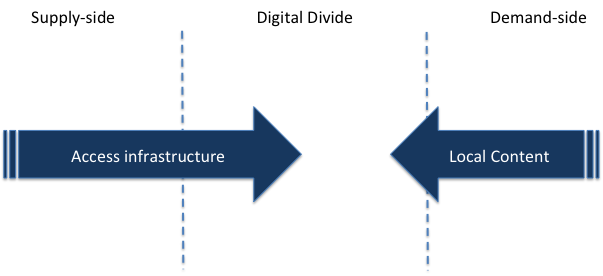Why Is Internet Growth Slowing Down?
For instance, according to recent numbers, more than 50% of web pages are in English, while over 25% of internet users speak English, but only about 5% of the global population are native English speakers.
The growth in the number of internet
users is slowing down, far too early in the adoption cycle.
Comparing internet
adoption with another fast-growing global technology, mobile cellular service,
we see remarkably similar decreases in annual growth rates, from over 70% in
1996 to under 10% in 2015. However, mobile cellular service is nearing saturation
at almost 100% penetration, while internet usage has not yet reached 50% of the
global population.
 |
| Source: International Telecommunications Union (2015* numbers estimated), World Bank, Internet Society analysis. |
The slowdown in growth
rates is not just bad news, it is also puzzling, because the internet is more
widely available and affordable than ever.
Take Rwanda – a
country that has put the digital agenda at the center of its policy plans, with
great success. Today 85% of the population is covered by 3G mobile broadband,
and almost 40% have access to 4G. The Alliance for Affordable Internet (A4AI)
ranks Rwanda first among developing countries on its affordability index. Yet
just under 25% of the population subscribe to mobile broadband.
This shows that the
digital divide cannot be filled with a “build it and they will come” approach.
Instead, the question that needs to be answered is why are those who could
connect to the internet not doing so?
The answer, according
to survey after survey of non-users, as noted in a recent study on Brazil, is a lack of interest
or perceived need for the internet. This, in turn, suggests that the missing
element in bridging the digital divide is locally relevant content, which is in
the local language(s) and relevant to local demand.
 |
| Source: Internet Society |
Filling this gap may
be as challenging, or more, than the efforts to deploy infrastructure. For
instance, according to recent numbers, more than 50% of web pages are in
English, while over 25% of internet users speak English, but only about 5% of
the global population are native English speakers.
And even where
language is not an issue, local relevance is key. While much existing content
has international appeal, much is also targeted. A local online newspaper in
Spain may not be of any interest in Mexico, French e-government services are of
little use in Senegal, and Uber is only of interest in cities where Uber
operates.
A key source of local
content is local developers, who know the market and can identify needs. And
while the internet provides fertile ground for entrepreneurs, putting access to
education, training, cloud computing, and even fundraising potentially just a
few clicks away, online innovation requires Internet access and skills, access
to payment platforms, and increasingly local hosting solutions.
Focusing on local
content generates a new set of challenges, and nurturing innovation is not
easy. Without it, however, internet growth may continue to slow, and recent
advances in access may not be fully utilized, which makes the access demand
side the key issue for stakeholders trying to ensure that slowing growth does
not become the new normal.
Source: WEF



Comments
Post a Comment